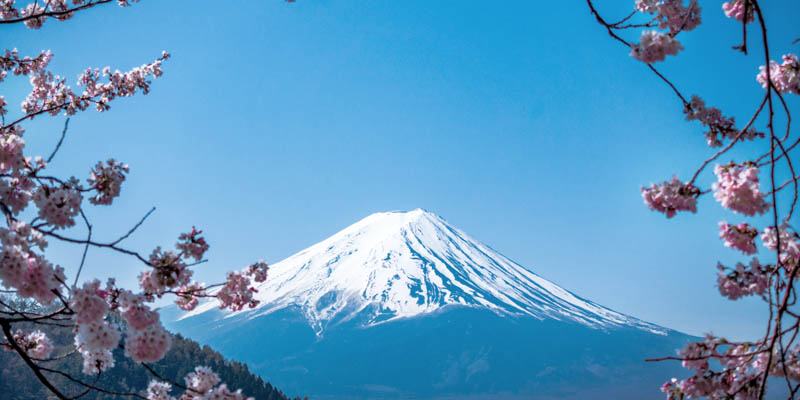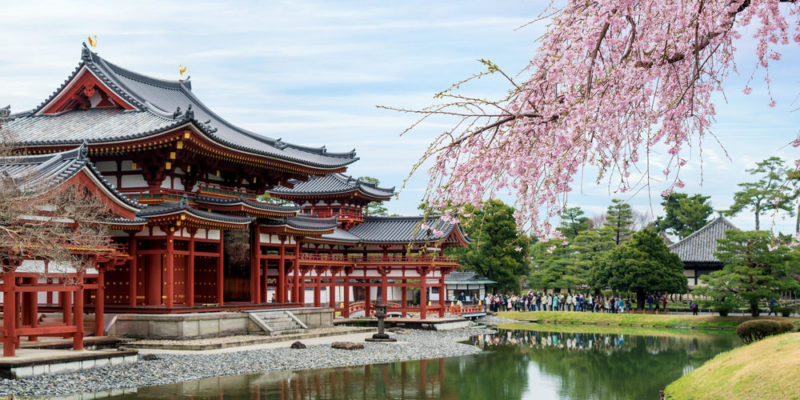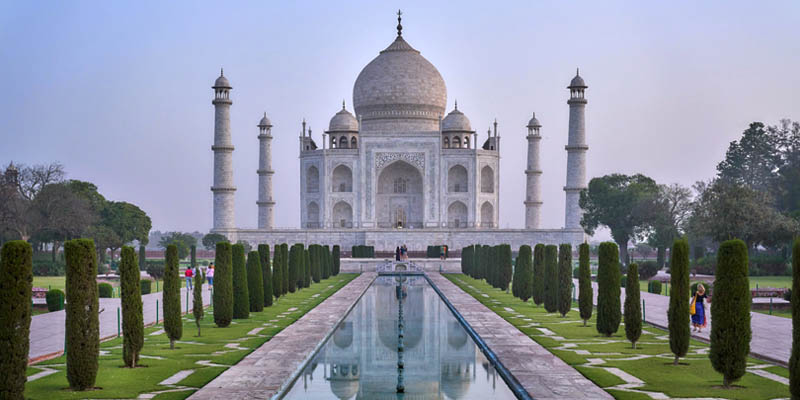We explore Asia, and describe its physical and cultural characteristics. In addition, we discuss its economy, religion and history.

What is Asia?
Asia is one of Earth's six continents and the largest in size. It covers an area of 17.18 million square miles (44.5 million km2), representing 30% of the Earth's total surface area. Asia is also the most populous continent, with an estimated population of 4.5 billion, which constitutes more than half of the world's total population.
The continent is home to the two most populous countries in the world: India and China. On April 14, 2023, India surpassed China in population, becoming the most populous country on the planet. It currently has 1,428 million inhabitants, which is more than twice the population of Europe and more than the population of all African countries combined.
How did Asia get its name? The origin of the name "Asia" is unclear, with several theories surrounding it. One of them suggests it derives from a nymph in Greek mythology. Another theory holds that it comes from the Akkadian term "asu," meaning "east".
CHARACTERISTICS OF ASIA
- It is the largest continent on Earth and is part of the landmass called Eurasia, which it shares with the European continent.
- It is linked to the African continent through the Suez Canal.
- It has the greatest diversity of ethnicities and cultures.
- It exhibits a wide range of climates due to its vast size.
- The most spoken languages are Mandarin Chinese, followed by Hindi or Hindustani, the official language of India.
- See also: North America
Area, population and countries of Asia

Asia is part of the landmass known as Eurasia, which it shares with Europe, and which connects to the African continent through the Suez Canal. It is bounded by the Arctic Ocean on the north, the Indian Ocean on the south, the Pacific Ocean on the east, and the Ural Mountains on the west. It covers a total area of approximately 17.18 million square miles (44.5 million km2).
Asia comprises 48 countries, including some of the world's largest and most populous.
- Russia. It has an area of about 6.57 million square miles (17 million km2).
- China. It has an area of about 3.67 million square miles (9.5 million km2).
- India. It has an area of about 1.24 million square miles (3.2 million km2).
- Kazakhstan. It has an area of about 1.04 million square miles (2.7 million km2).
- Saudi Arabia. It has an area of about 0.81 million square miles (2.1 million km2).
Asia has a total population of over 4.5 billion, which makes it the world's most populous continent. Among the most populous countries in Asia are:
- India. It has a population of 1,428 billion. It is the world's most populous country.
- China. It has a population of 1,423 billion. It is the second most populous country on the planet.
- Indonesia. It has a population of 259 million.
- Pakistan. It has a population of 201 million.
- Bangladesh. It has a population of 156 million.
Physical geography and climate of Asia

Asia is characterized by extremely diverse natural conditions in terms of topography, climate and hydrography. Central Asia is home to the Himalayas, the world's highest mountain range, with peaks over 27,900 ft (8,500 m) high. Mount Everest, at 29,03 ft (8,848 m) above sea level, is the world's highest mountain on the planet.
North of the Himalayas lie expansive plateaus like the Gobi, which covers a vast area of China. To the north and east of the continent, the predominant relief is the plains, the most important being the West Siberian Plain, the North China Plain, and the South China Plain.
Due to its great latitudinal extent, Asia has exceptionally varied climates. It has hot and moist climates in the south and in equatorial regions, hot and dry deserts in the tropics, temperate and moist in mid-latitudes, cold and moist in higher latitude areas, and polar cold in northern Russia. Its vastness means there are large areas far from the ocean's influence, resulting in extremely dry climates with great temperature ranges.
The continent's size and the moisture of the majority of its climates determines the presence of extensive hydrographic basins and large rivers. The Yangtze, which flows over 3,915 miles (6,300 km), is among the world's longest, followed by the Yellow River 3,355 miles (5,400 km), and the Mekong with 3,032 miles (4,880 km).
Flora and fauna of Asia
The vast extension of the continent and the variety of relief features and climates favor ecosystem diversity. Asian flora is extremely diverse, boasting a great variety of species. Southeast Asia has tropical jungles with bamboo and oil palm trees. In the east and north, coniferous forests are predominant, while colder northern areas are characterized by birch, willow, poplar, and pine forests.
Asian fauna is equally diverse. Asian elephants, tigers, snow leopards, Asian leopards, brown bears, rhinos, and orangutans are among the continent's most characteristic animals. The arid regions in the Middle East are home to species such as camels and desert foxes. The continent also boasts a wide variety of birds, including the eastern imperial eagle, the Himalayan vulture, and the greater flamingo.
Culture and religion in Asia

The most widely spoken language in Asia is Mandarin Chinese, with over 1 billion speakers in China and other countries on the continent. The second is Hindi, the official language of India. Arabic, in the southern part of the continent, and Bengali in Bangladesh, are also spoken by millions.
Asia is considered the cradle of the world's major religions, including Judaism, Christianity, Islam, Buddhism, and Hinduism. This vast continent has numerous sacred cities and sites with unique architectural works representing different faiths. Many of these are designated World Heritage Sites and, along with the natural landscapes, are one of the main tourist attractions in Asia.
The Taj Mahal in India, Mecca in Saudi Arabia, the Temple of Heaven in China, Borobudur Temple in Indonesia, and the Omar Mosque, the Western Wall, and the Church of the Annunciation in Israel are among the most significant religious sites in the world.
Economy of Asia

China and Japan are two of the world's leading economic powers. These two countries, along with the so-called "Asian Tigers" (Hong Kong, Singapore, South Korea, Taiwan, Malaysia, Thailand, Indonesia and the Philippines), are the most economically developed countries on the continent.
While many of these countries still maintain a primarily agrarian economy, their technological and industrial development, coupled with the growth of services and domestic and international trade, have positioned them as some of the world's leading economies.
Other countries, such as Saudi Arabia, Iran, Iraq, Kuwait, Qatar and the United Arab Emirates, base their economies on oil production and exports. Conversely, countries like Bangladesh, Laos, and Afghanistan have considerably lower economic development, and are among the poorest countries in both Asia and the world.
Finally, tourism is one of the most important economic activities in Asia. Countries with major tourist attractions include:
- Bhutan. Located in the Himalaya Mountains, it is renowned for its landscapes and architecture, like the Taktsang Palphug Monastery.
- Cambodia. Notable for its major cities, which include the capital Phnom Penh, Angkor, and Siem Reap with the Royal Gardens.
- China. Beijing, its capital, boasts an unparalleled architectural history, featuring structures like the Great Wall, the Forbidden City, and the Summer Palace.
- India. Known for its monumental architecture, like the Taj Mahal in Agra, built between 1631 and 1648 and considered one of the seven wonders of the world.
- Israel. Jerusalem holds immense significance for the Catholic, Jewish, and Muslim religions, attracting millions of tourists every year.
- Japan. Its capital, Tokyo, is among the world's top tourist destinations.
- Laos. Famous for the city of Luang Prabang, designated World Heritage Site for its temples. The country's capital, Vientiane, is home to the nation's most important shrine, Pha That Luang.
- Maldives. Located in the Indian Ocean, it offers multiple natural attractions and activities like diving.
- Nepal. Its capital, Kathmandu, is one of the oldest cities and is known for its temples and mountainous landscapes, like the Himalayas.
- Thailand. Popular for its beaches and water sports-related tourist destinations.
- Vietnam. Renowned for numerous World Heritage Sites, like the ancient city of Hoi An, Ha-Long Bay, and My Son sanctuary.
Countries in Asia
Asia is made up of 48 countries. All of them are full members of the United Nations, with the exception of Palestine and Taiwan, both of which lack political recognition and participate only as observer members without voting rights.
In addition, there are other economic and political blocs formed by various countries on the continent. Among the most prominent are:
- The Association of Southeast Asian Nations (ASEAN). Comprises Thailand, Indonesia, Malaysia, Singapore, the Philippines, Laos, Vietnam, Cambodia, Myanmar, and Brunei.
- The Asia-Pacific Economic Cooperation (APEC). Consists of some Asian countries like Thailand, Singapore, and the Philippines, as well as countries from Oceania and the Americas.
- The Commonwealth of Independent States (CIS). Made up of most of the countries that were part of the former Soviet Union, such as Ukraine, Uzbekistan, and Kazakhstan.
- The Organization of the Petroleum Exporting Countries (OPEC). Includes Saudi Arabia, Iran, Iraq, Kuwait, the United Arab Emirates, and other countries from Africa and the Americas.
The continent is rife with numerous long-standing ongoing political and territorial conflicts between countries in the region. Among the most important are:
- The confrontation between China and Taiwan over the latter's independence.
- The conflict between North and South Korea, which began in the 1950s with a war that claimed the lives of over 5 million people and continues to this day with diplomatic negotiations.
- The conflict between India and Pakistan over the Kashmir region.
- Separatist movements, as is the case with Chechnya in Russia.
- The decades-long conflict between Palestine and Israel, resulting in military confrontations over unresolved diplomatic negotiations.
- The war between Russia and Ukraine, which began in 2022 and is still an ongoing conflict.
History of Asia
One of the earliest cultures in Asia was the Indus Valley civilization, established in present-day Pakistan and India more than 3,500 years ago. Another important ancient culture in Asia is the Chinese civilization, tracing back around 5,000 years. Throughout its long history, China has been ruled by numerous dynasties, including the Zhou, Qin, and Han dynasties.
In the 1st century AD, the Roman Empire began its expansion into Asia, conquering much of the Near East. During this period, Christianity started to spread throughout the region, and in the 4th century it became the official religion of the empire.
Later, with the arrival of the Arabs and the establishment of the Caliphate in the 7th century, Islam spread across Asia. Islamic religion and culture had a great influence in many regions of Asia, leading to the rise of vast empires like the Mughal Empire, which ruled parts of India, Pakistan, and Bangladesh from the 16th to the 19th century.
In the 19th century, the European powers began to colonize large portions of Asia, leading to a series of conflicts and independence movements. The British Empire in particular exerted a profound influence on the continent, colonizing India, Malaysia, Singapore, and Myanmar, among other countries. The Japanese occupation of Korea, China and other countries also had a major impact in the region.
During the 20th century, following World War II, countries like China and Singapore began a phase of economic growth that would transform them into some of the world's leading political and industrial powers.
References
- Cátedra Uno (s.f) Asia: características, clima, relieve, hidrografía, países y regiones. CatedraUno
- El Kanfoudi, A. (2023) Que es la ASEAN. ElOrdenMundial
- Geoenciclopedia (2022) Asia. Geoenciclopedia
- Ortega, J. A. (s.f) Horizonte demográfico de Asia. Anuario Asia - Pacífico.
Explore next:
Was this information useful to you?
Yes NoThank you for visiting us :)